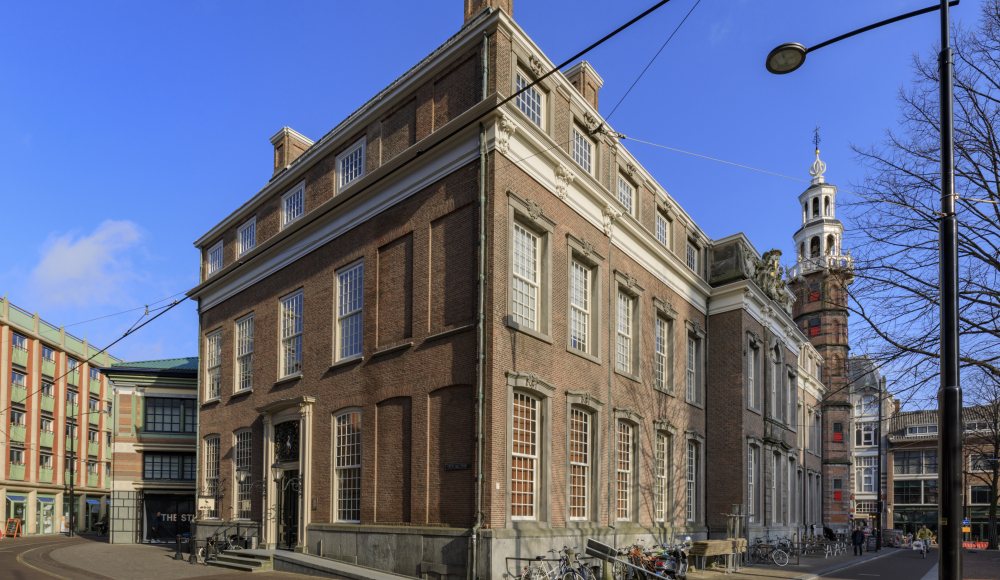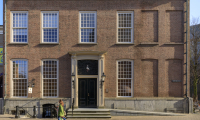

The beautiful Old Town Hall on the Daily Green Market is the icing on the cake for bridal couples, but also for residents of The Hague and visitors to the city. Here criminals were convicted, deeds signed and decisions made for the city. The right to vote was proclaimed on the platform in 1917, and King Willem Alexander gave birth to the three princesses of Orange here.
The Old Town Hall consists of two parts: the 16th-century part on the Daily Green Market and an 18th-century extension on the Grote Halstraat. The building was extensively restored in the 1970s. It is no longer in use as a town hall, except for weddings.
Village without city walls
In the 15th century, the Hof van Brederode, the residence of the noble family of the same name, stood on the Daily Green Market. It was built high and dry on a beach ridge, a natural elevation in the landscape. In 1450 the building was taken into use as Dorpshuys, from which the village Die Haghe was administered. There were no city walls, so what was then The Hague was vulnerable to looters and enemy invaders.
The residents wanted more security and raised money for city walls. But the mayors (in those days there were always several mayors) had a nefarious plan: the money came in handy for the construction of a town hall. City walls were never built.
Dutch Renaissance
The Hof van Brederode went down, except for the cellars. They are still there. In 1565 the Stedehuys, the present Old Town Hall, was built thereupon. This is a showpiece in the style of the Dutch Renaissance. It is characterized by stepped gables, cross frames, ornaments such as pediments and the use of brick masonry interspersed with natural stone.
The Old Town Hall got a tower and a small platform, but a forecourt was missing. This was due to its location on the beach ridge and the houses that were close to it, which was customary for that time. Female statues of Faith, Hope, Love, Justice and Prudence adorn the opulent facade. Who the master builder was remains a mystery to this day.
Four furrow
Not only the exterior of the Old Town Hall is full of splendor, the interior is also spectacular. The period rooms and paintings exude the stateliness and opulence of the rich past.
The oldest hall is the Vierijzer or Schepenzaal, where four scissors or benches were placed in a square for the sheriff and the aldermen, who judged good or evil here. The room is otherwise rather sober, but that makes the alderman's seat from 1671 with the gilded decorations and the wrought iron stand out. The Counts and Countess of Holland watch from their portraits on the wall. Under the four-scissors is the cachot where crooks were locked up, audible and visible to all. The access stairs to the Vierspoel were used to make announcements to the bourgeoisie.
The ceiling of the adjacent former mayor's chamber was richly painted in 1682 by Theodorus van der Schuer, one of the founders of the Hague Drawing Academy. Against this ceiling we find, among other things, the Eye of Justice and Lady Justice. The other period rooms are also a feast for the eyes.
New wing
The Magistrate controlled the expanding village of Die Haghe from the Old Town Hall, which began to show more and more urban features. Reason enough to build a large wing on the side of the Kerkplein. Architect Daniël Marot made the design in Louis XIV style and Jan Baptist Xaverij made the sculptures on the facade. The stately side facade opposite the Sint Jacobskerk is a modest application of the French Baroque in Dutch Classicism. In 1733 the administrators moved into the extension. In 1882 the facade along the Groenmarkt was erected.
Just like the city of The Hague, the city council was bursting at the seams in the 19th century. That is why a branch was moved into Javastraat. This remained in use for council meetings until 1972. At the same time, part of the city council was housed in a building on Patijnlaan from 1953.
It is now almost impossible to imagine, but next to this Old Town Hall a modern, concrete extension stood from 1972 to 1994 as a replacement for the council chamber with information center to make up for the lack of space. This extension disappeared when the ultramodern, snow-white new town hall on Kalvermarkt was put into use in 1995.
On December 12, 1917, the municipal secretary M. van Reenen proclaimed universal (male) suffrage on the steps of the old town hall on the Groenmarkt.

